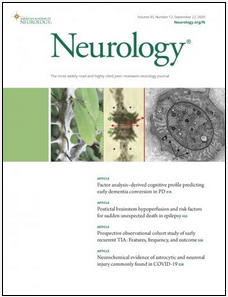 Myasthenia gravis is caused by the abnormal production of autoantibodies, frequently directed against elements of the acetylcholine receptor leading to a dysfunction of the neuromuscular junction. Its prevalence is estimated between 50 and 200 per million, or several thousand patients in France. In the 1960s, the treatment remission rate barely exceeded 10%. The mortality rate was still 7% during the period 1966 – 1985. Since then, the therapeutic arsenal has been enriched, in particular with new immunosuppressants and immunomodulators (such as rituximab). The impact of these new treatments on the course of the disease appears to be very favorable according to a retrospective study carried out on 199 patients with generalized myasthenia gravis and treated from the year 2000 by two Austrian expert centers (Vienna and Innsbruck ) within a year of their first symptoms.
Myasthenia gravis is caused by the abnormal production of autoantibodies, frequently directed against elements of the acetylcholine receptor leading to a dysfunction of the neuromuscular junction. Its prevalence is estimated between 50 and 200 per million, or several thousand patients in France. In the 1960s, the treatment remission rate barely exceeded 10%. The mortality rate was still 7% during the period 1966 – 1985. Since then, the therapeutic arsenal has been enriched, in particular with new immunosuppressants and immunomodulators (such as rituximab). The impact of these new treatments on the course of the disease appears to be very favorable according to a retrospective study carried out on 199 patients with generalized myasthenia gravis and treated from the year 2000 by two Austrian expert centers (Vienna and Innsbruck ) within a year of their first symptoms.
Published in July 2020, the results of this study show that:
- the overall prognosis is favorable, with 63% of patients achieving lasting minimal manifestation status (MMS) or better, ie the goal of treatment for myasthenia gravis;
- the mortality rate is 1%;
- most improvements under treatment occur in the first two years, a response to treatment within this time (40% of cases) suggesting a favorable long-term outcome; on the contrary, the persistence of symptoms within this same period (19% of cases) more often prefigures a refractory form in the years that follow;
- the usual classification of myasthenia gravis into 5 diagnostic subgroups (early onset with anti-RACh, late onset with anti-RACh, associated thymoma, anti-MuSK + and double seronegativity) is prognostically relevant since it helps to differentiate patients who respond to treatment (onset after the age of 50, etc.) from those who are more often refractory to treatment (early onset, thymoma, etc.).
